EPIC PRICE DROP: WHAT THEY SAID
When Vail Resorts (VR) unveiled a 20 percent price drop across the board for its 2021-22 Epic Pass lineup in March, it made national news. A Travel & Leisure article, for example, carried the headline, “Vail Resorts Is Reducing the Price of Its Epic Pass, Making It One of the Best Values in Skiing.” In short, the news got big-time exposure.
A huge price drop to a product already held by roughly 1.4 million people, plus national press highlighting the price, can have an impact on the market. Some operators had already gone in the opposite direction—limiting pass sales and holding or raising prices (read, “The Evolution in Pass Plans,” p. 30). Others were still contemplating their response, if any.
We asked a few independent operators how VR’s pricing move might impact them. Vern Greco, president/CEO of Pacific Group Resorts Inc. (PGRI), captured the general sentiment best:
“Alterra, Boyne, and Powdr, even PGRI, all held to their original pricing strategies. PGRI spring pass sales were the best on record, even outpacing the previous-year totals. Generally, spring sales account for 70 percent of our pass sales.
“Vail’s 20 percent price reduction might not move market share. Which pass people buy is driven more by where they live, own property, and prefer to ski than by price. A Sugarbush, Stowe, Killington, or Okemo loyalist isn’t going to change their area of choice by the pass price. The loyal followers of Squaw Alpine simply won’t consider Northstar or Heavenly.
“The real game changer in my view is a different issue, and that is crowding. Epic and Ikon have given access to people who would not have visited previously. This season, even with Covid, the difference was noticeable. Long lines, no parking, etc. Part of the lift line issue was reduced capacity due to distancing protocols. But by the end of the season, with increased confidence, familiarity, and management, lifts were running 80-90 percent full. The common refrain on the hill is, ‘It is too crowded.’ There literally is no room, starting with parking—even on weekdays. If the Vail strategy works, and the 20 percent reduction in price sells enough incremental passes to offset the average pass price decline, crowding only gets worse.
“This past season, limited day tickets drove urgency, spread demand more evenly over seven days, and reduced discounting—exploiting the advantages of locked-in revenue and higher yield. Limiting daily tickets may be the new revenue management and capacity control tool that preserves the experience.”
Here’s what other operators said (some anonymously):
“For those resorts with great/different experiences and good relationships with their guests, what Vail is doing gives those other resorts an opportunity to do something different. Honestly, they have to, because they can’t compete on a volume basis with Vail.”
—Steve Wright, Jay Peak, Vt.
“Sunlight [Colo.] has not raised the price of its regular adult season pass since 2017, partly because of the pricing pressure of Epic/Ikon, and we also had a poor snow year in 2017. This year [2021-22] we’ve increased that price by $30. A modest and reasonable increase from our view—but still one that caused a lump in our throats after seeing VR’s announcement.”
—Troy Hawks, Sunlight, Colo.
“Yes, we pay attention to what Vail is doing. We will be limiting our pass sales again next season because our skiers appreciated the experience with lower capacity, and we want to give them a positive experience. Our primary focus is bringing new people to the sport and creating new skiers and riders. We aren’t catering to the core.”
—Carolyn Stimpson, Wachusett, Mass.
“The downward pricing puts pressure on our pricing. Smaller resorts like ours can only go so low and still keep the lights on. I really think the immediate brunt of the strain is on middle-sized resorts. They have even more operating overhead than smaller resorts, yet they have less room to move in this competitive pricing environment.”
—Troy Hawks, Sunlight, Colo.
“We have discussed this extensively. The brief answer is that we think it may have a positive impact for Windham. We have announced that we will continue capacity restrictions on peak days and pass sales may be limited. It worked well this year and was a better experience for all. Passholders are especially pleased, and pass and program sales for 2021-22 have exceeded expectations. Guests appear willing to pay more for a focus on quality of experience. We will build on lessons learned from 2020-21 through continued improvements in technology and an extensive capital spend this summer.”
—Chip Seamans, Windham, N.Y.
“There are times when Vail will do smart things operationally that people will mimic (reservations, safety, etc.) but pricing is an area that, as an independent or small family operator, you’d be foolish to chase. I think a national tone is only relevant if one also believes that the ultimate difference in products being offered is neutral, which we know it isn’t.”
—Steve Wright, Jay Peak, Vt.
“What about the Epic lift lines? Even in Covid, the vast majority of our passholders work Monday to Friday, and we mostly see them on the weekends—the same weekends that they see the photos on social media of the mega lift lines at the VR resorts and say, ‘No way.’ With an even lower price, isn’t VR inviting more lift lines?”
“Overcrowding at other ski areas and resorts—or even just the sense that there was overcrowding—was something we heard a lot about from our guests. I’m concerned that with such price reductions, those ski areas and resorts may become even busier.
“Conversely, we believe that the high quality and less crowded experience we offered our guests this winter may help us capture and maintain the loyalty of the lion’s share of our first-time guests and passholders from this year. We saw a LOT of new people this season who either couldn’t get in on their ‘normal’ season pass options or actively sought a change, and we think they were pretty happy with it. So in a nutshell, while I don’t see us raising prices a whole lot this coming year (if we do at all), I also don’t see us trimming them by 20 percent or doing anything as a direct reaction to what the major players are doing.”
—John DeVivo, Cannon, N.H.
At SAM, we don’t doubt that some skiers and riders will shy away from the Epic Pass over concerns with crowding. We also don’t doubt that VR understands that, and has an inkling of how its areas will feel (and perform) after a return to full indoor and lift capacities. VR will surely experience some large peak-day crowds, but it can take steps to mitigate that. The question is, what steps?
POST-PANDEMIC PLANNING PRIMER
Capitalize on these trends for a prosperous future.
Since the beginning of the pandemic, one question has loomed in the background of all social, economic, and cultural interchange: When will we get back to normal? Given the disruptions and deprivations wrought by Covid-19, the sentiment is understandable, but it might be misdirected. Perhaps the more pertinent question should be: When will we get forward to normal?
For the ski industry, many pandemic-induced changes in operational procedures and guest behavior will survive into the post-pandemic future. How successfully ski resorts adapt and take advantage of those changes was the central issue in the SAM Huddle on March 29: “Post-Pandemic Planning: A Primer Moving Forward.”
A variety of important trends and ideas were discussed.
Nurture the Newbies
SE Group’s Claire Humber noted that several key trends affecting ski resorts had emerged from the pandemic, chief among them—“the silver lining”—a surge in interest among Americans to become outdoor recreation participants.
Know the data. Outdoor Foundation managing director Stephanie Maez provided statistical nuance to the newcomer trend, citing data from the foundation’s recent survey of 600 new outdoor participants, including:
• 60 percent of the new participants (or lapsed participants returning) intended to continue with outdoor activities;
• 25 percent were unlikely to continue with outdoor activities;
• female participation jumped nine points (49 percent to 58 percent);
• a slight increase in ethnic diversity, a trend toward a more youthful profile, and a slight trend toward lower-income participants.
Armed with that kind of data, resorts should be able to form more targeted plans that could improve newcomer retention. Among other strategies, said Maez, stressing the social aspects of the sport makes sense, as people come out of the pandemic “craving connection.”
Physical and psychological benefits. In addition, resorts might want to stress the health benefits of outdoor recreation, not only physical but psychological. Maez pointed out that many newcomers enjoyed outdoor activities because they provided an antidote to some of the mental health consequences brought on by pandemic isolation. She expected that an appreciation of the feel-good aspect of outdoor activities would continue post-pandemic.
Regina Connell, founder of Collective Work, recommended that resorts “nurture the newbies.” The newcomers, said Connell, represent a broader audience well beyond a core group swayed by “ski industry influencers.” But while a broader audience might represent an expansion of opportunity, it also lands ski resorts in a more competitive arena. Newcomers might be flooding into outdoor recreation, but skiing is just one of the many activities they have to choose from.
Maintain connections. One of the highlights of the pandemic for ski resorts was the active channel of connection established with guests, mostly in informing people of Covid protocols and in conducting contactless transactions. The messaging might change post-pandemic, but regular communication should continue as resorts seek to retain the interest and attention of newcomers. “Do not take your foot off that pedal” in the post-pandemic era, Connell advised.
Work-Play Integration
Another important trend brought on by the pandemic has been what Humber called “flexibility”—the overlapping of work, home, school, and play. Working remotely, especially, is expected to endure post-pandemic for many. “The lines are going to continue to blur,” said M.J. Legault of the consulting firm Origin.
Legault cited a New York Times report predicting that roughly one-fifth of the workforce will continue to work remotely post-pandemic. As a result, resorts might want to “redefine how that vacation might look” with the integration of work and play. Legault pointed to Club Med as one company putting together hybrid packages combining recreation with work-related services.
Successful adjustment. During the pandemic, some resorts have found creative ways to tap into the flexibility trend. Jay Peak, Vt., for example, offered long-term stays—a month or more—in its condos to capitalize on the interest among urban-based people to seek Covid shelter in the mountains, where they could work remotely while having recreational opportunities right out the door.
Jay Peak was especially hard-hit by the pandemic with the closing of the nearby Canadian border, so it needed something to plug that revenue hole. The result of the long-term rental program, according to Jay’s general manager Steve Wright: more than $2 million in summer and winter lodging revenue combined.
In addition, the strategy kept “people on campus.” Ancillary benefits, according to Wright, were added revenue for local businesses, and deeper ties with guests now that they were more committed members of the Jay community. Roughly four to five percent of the long-termers became real-estate buyers. Jay plans to continue the long-term stay program beyond the pandemic, but on a smaller scale in order to open up lodging inventory for the resumption of regular business.
New locals. Another noteworthy component of the flexibility trend, according to Legault, has been “an influx of urbanites moving to mountain towns.” (Anecdotally, real-estate sales and real-estate valuations increased dramatically in many ski-resort communities during the pandemic.)
The new mountain-town population, said Legault, is eager to tap into more of a local community feeling than what they left behind in the city, and resorts should plan accordingly. Also, the new influx might represent a greater social and professional diversity than had previously characterized a mountain-town demographic, another factor for resorts to consider in their community relations.
Virtual Experiences
A trend toward the convergence of real and virtual recreational experiences might not have been generated by the pandemic, but it was certainly accelerated by it and will continue post-pandemic. Legault cited as an example Zwift, the cycling app that allows riders on stationary bikes at home to match up their efforts with other cyclists, including professionals. There might not yet be a comparable app for skiers, but resorts, if not capitalizing on this trend, “should at least be aware of it,” said Legault.
Connell cited the example of a spa that offers online cooking classes, resulting in not just a marketing outreach but actual revenue generation while maintaining a continuing relationship with guests. Humber translated that into a ski-resort context, suggesting that a ski school might offer online fitness classes.
Augmenting, not replacing. In addition, resort operators fearful that virtual experiences might displace actual travel should understand how the real–virtual integration is playing out in other sports. As Humber put it, using an app like Zwift is “augmenting the [real] experience, not replacing it.” So, a virtual component or an app can be an enhancement, an add-on, to the real-life experience.
Deeper Connections
The final trend discussed was making a deeper connection with guests and staff, in large part by building and maintaining trust. Legault noted that while there has been a significant decline in recent years among consumers in their trust of media and social media, employers overall continue to enjoy the trust of their employees. As Wright noted, “Trust starts with the way we treat our staff,” and that trust filters through to guest relations.
Shared values. Building trust can also come from creating a relatable identity through shared values. Legault said that, during the pandemic and the emergence of such movements as Black Lives Matter, a “real collective social responsibility has been pushed to the top of the agenda.” In other words, guests are more likely to migrate toward resorts that exhibit some kind of social responsibility.
For example, Taos Ski Valley, N.M., became the first ski resort to be certified as a B Corporation, an acknowledgment of its heightened social and environmental responsibility. Taos CEO David Norden couldn’t link recent increases in the resort’s skier numbers directly to its socially responsible positioning, but he believed that it had helped in staff recruitment and that consumers, drawn into the current tide of socially responsible consciousness, “are looking for companies that take a stand.”
The pandemic generated important shifts in ski-resort business, resort–guest relations, and skier behavior. As the world transitions to a semblance of normalcy post-pandemic, resorts need to be aware of those shifts and plan accordingly to capitalize on them. —Peter Oliver
LOOKING BACK AT THE SHUTDOWN
The novel coronavirus disrupted the 2019-20 season and altered life for the 2020-21 season, making year-to-year financial comparisons less useful for planning purposes. But the NSAA Economic Analysis of United States Ski Areas for the 2019-20 season is still worth reviewing, as it helps quantify the impact of the pandemic. Further, to help put this impact in a longer-term perspective, the Analysis compares 2019-20 to the previous five years, and to the decade-earlier results from 2010-11.
The Analysis says that “the ski industry lost about $915 million in direct winter season revenue at the end of the 2019/20 winter due to early closures,” and predicts that summer losses were about $250 million. Average gross revenue declined at the 124 reporting areas by 11.4 percent. Still, they were 37.7 percent higher than a decade earlier. And, with costs down, too, by 8.7 percent, pre-tax profit margins slipped only a little, to 18.3 percent from 19.4 percent. As such, pre-tax margins were the fourth-highest of the past decade.
Among the other standout data points:
• Revenue per visit (summer and winter) across all regions was $121.31, up 8.4 percent. This figure ranged from $83.89 in the Pacific North region to $138.62 in the Pacific South. Winter revenues per visit were up 6.3 percent on average.
• While the mid-March 2020 shutdown affected the largest resorts most, smaller areas suffered in 2019-20, too. Total gross revenue was down 15.1 percent at the extra-large resorts, and down 14.7 percent at small areas. Gross revenues declined the least at large (not extra-large) ski areas, down 4.5 percent. Large resorts saw the smallest percentage declines on several financial metrics, in fact, including operating profit and profit margins. Small areas saw the greatest percentage declines by these measures.
• Overall, pre-tax profit margin correlated with size; it was highest at extra-large ski resorts (21.5 percent) and lowest at small ski areas (9.7 percent).
• Winter ticket revenue per visit rose for all size groups. At small areas, it was $36.10; medium, $44.35; large, $53.75; and extra-large, $70.68. However, many small areas have other non-ticket revenue streams (rentals, for example), and a higher per-visit total revenue than medium areas ($75.52 to $72.10).
The 2019-20 Economic Analysis also includes valuable insights into long-term trends, such as the decline in marketing expenses as a percentage of revenues—just 2.9 percent of all expenses, down from 4.5 percent a decade earlier.
The Analysis notes that there are several possible explanations for this decline, including the reliance on and loyalty of season passholders. The report adds, “However, spending on marketing could be increased and re-directed into other specific departments, like lessons and equipment rentals, where revenue growth has not kept up with ... tickets, food & beverage, and retail stores.”
All in all, the 2019-20 Economic Analysis contains plenty of useful data despite the abnormal end to the winter season. Resorts performed remarkably well, all things considered, and that might be the biggest revelation of all. With a bit more attention to marketing, who knows how strong the industry could become.
SUPPLIER NEWS
Jeff Boliba joined SNOW OPERATING as chief operating officer for its SnowCloud resort software business. Boliba was formerly Burton’s global marketing vice president of sport and participation.
ACCESSO TECHNOLOGY GROUP PLC has expanded its partnership with Alterra Mountain Company to provide contactless mobile food and beverage capabilities for six of the company’s North American mountain destinations.
TECHNOALPIN introduced two new snowmaking products: the TT10 fan gun, an upgraded version of the TR10 with a tilting tower for ease of maintenance; and the three-model TL lance series, with two, four, or eight flow rate steps.
MND will install a detachable six-passenger bubble chairlift at Waterville Valley, N.H.—the company’s first lift of its kind in the United States—a $9 million, two-year project scheduled to be completed ahead of the 2022-23 season.
MOUNTAINGUARD insurance director of risk management and education Mary Bozack retired in March. She joined the team in 1998 as a claims specialist.
After a 50-year career in the ski industry, SMI SNOW MAKERS technical representative for the Northeast territory, John Parker, retired at the end of March.
PEOPLE
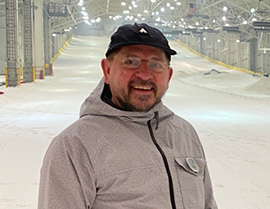 Mark DobrowolskiIn the East, Big SNOW American Dream named Mark Dobrowolski as general manager. Dobrowolski had served as interim GM since former general manager Jim Haas died in March. … Sugarbush, Vt., hired Patrick Konvicka as vice president of mountain operations and recreational services.
Mark DobrowolskiIn the East, Big SNOW American Dream named Mark Dobrowolski as general manager. Dobrowolski had served as interim GM since former general manager Jim Haas died in March. … Sugarbush, Vt., hired Patrick Konvicka as vice president of mountain operations and recreational services.
Adam White was hired as Vail Resorts senior manager of resort communications and marketing for Vermont and New Hampshire. ... After 25 years as marketing director at Wachusett Mountain, Mass., Tom Meyers is semi-retiring, staying on part-time as marketing adviser to other members of the team.
In the West, Alterra Mountain Company promoted Mark Brownlie from Western Region chief operating officer to chief operating officer of resorts.
Vail Resorts (VR) is undergoing a shuffle in leadership: Mountain division president Patricia Campbell is stepping down to assume a new role as mountain division senior advisor; hospitality, retail, and real-estate executive vice president James O’Donnell will succeed Campbell as president of the mountain division, and will also lead its real estate business; Greg Sullivan, chief operating officer of Vail Resorts retail, will become senior vice president overseeing both retail and hospitality operations; mountain division senior vice president Bill Rock was promoted to executive vice president of mountain operations.
Also, Western Region senior vice president and COO Pete Sonntag left Vail Resorts in May. Eastern Region COO Doug Pierini has been appointed Western Region senior vice president and COO.
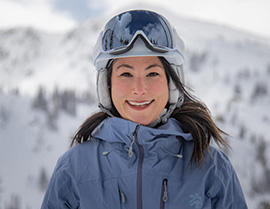 Allison PalmintereChloe Elliott now works for Vail Resorts as the senior communications specialist for Vail and Beaver Creek. ... Ski Utah welcomed Alison Palmintere as director of communications.
Allison PalmintereChloe Elliott now works for Vail Resorts as the senior communications specialist for Vail and Beaver Creek. ... Ski Utah welcomed Alison Palmintere as director of communications.
John Buhler is retiring as chief operating officer of Breckenridge Ski Resort. … Solitude, Utah, GM Kim Mayhew retired after more than 40 years in the Utah ski industry.
The University of Colorado–Boulder recently hired Dr. Natalie Ooi and Dr. Mark Gasta to help develop and lead its new Master of Science in the Outdoor Recreation Economy (MORE) launching in fall 2021.
AWARDS
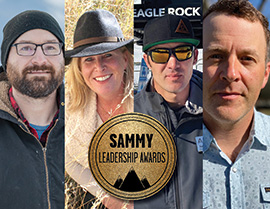 The 2021 SAMMY Awards winners include Katie Brown, from Steamboat Resort, Colo.; Robert McClendon, Tahoe Donner Association, Calif.; Jon Schaefer, owner of Berkshire East and Catamount Ski Area, Mass.; and Christian Théberge of My Mountain Co-op (MMC)-Shames Mountain in British Columbia. (For their full stories, see the special SAMMY Award section, page 50 a.)
The 2021 SAMMY Awards winners include Katie Brown, from Steamboat Resort, Colo.; Robert McClendon, Tahoe Donner Association, Calif.; Jon Schaefer, owner of Berkshire East and Catamount Ski Area, Mass.; and Christian Théberge of My Mountain Co-op (MMC)-Shames Mountain in British Columbia. (For their full stories, see the special SAMMY Award section, page 50 a.)
Former Snowbird president and general manager Bob Bonar received the inaugural Dick Bass Summit Award. The award was presented by Wasatch Adaptive Sports to Bonar during the annual HGGC Steve Young Ski Classic.
The North American Snow Sports Journalists Association (NASJA) honored several luminaries at its annual meeting March 23. Among them: Billy Kidd, Steamboat, Colo., received the Carson White Snowsports Achievement Award; Mike Rogge of the Mountain Gazette took the Mitch Kaplan Award for Excellence in Snowsports Coverage; and Corporate member Yves Juneau, CEO of the Quebec Ski Areas Association, earned the Bob Gillen Memorial Award.
OBITUARIES
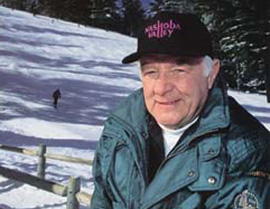 Alan Fletchder, Sr.Industry titan and “friend to all” Alan Fletcher Sr. died March 10. A self-taught skier who used a Hannes Schneider pamphlet to teach himself the sport, Fletcher’s love of skiing led to his vision of Nashoba Valley (Mass.), a ski area that has taught more than two million people to ski and ride since he founded it.
Alan Fletchder, Sr.Industry titan and “friend to all” Alan Fletcher Sr. died March 10. A self-taught skier who used a Hannes Schneider pamphlet to teach himself the sport, Fletcher’s love of skiing led to his vision of Nashoba Valley (Mass.), a ski area that has taught more than two million people to ski and ride since he founded it.
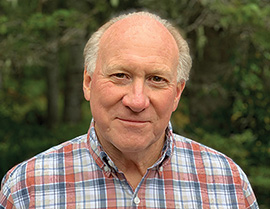 Jim HaasBig SNOW American Dream general manager Jim Haas, 70, died Saturday, March 6, due to complications caused by Covid-19. Haas was the first general manager of Big SNOW, which opened in December 2019 as North America’s first and only indoor, real-snow ski and snowboard facility.
Jim HaasBig SNOW American Dream general manager Jim Haas, 70, died Saturday, March 6, due to complications caused by Covid-19. Haas was the first general manager of Big SNOW, which opened in December 2019 as North America’s first and only indoor, real-snow ski and snowboard facility.
Public relations and communications specialist Jennifer Rudolph succumbed to cancer March 18 at the age of 49. She cut her PR teeth at Missy Farren & Associates and later worked at Colorado Ski Country USA and POWDR corp.
Telluride Ski and Golf, Colo., terrain park manager Hannah Smith died at home on March 15. She was 29.
Former Sugarbush, Vt., terrain park manager Tony Chiuchiolo died March 5 from a heart attack. He was 47 years old. In addition to managing terrain parks, Chiuchiolo was also an events coordinator and coordinated children’s programs at Sugarbush.
Bill Moss died in June 2020 after a lengthy professional career that began at Alta as a ski patroller; he later managed Hans Hall Inc., distributor of tracks for grooming equipment. Moss received the SAVMI Lifetime Achievement Award in 2016.






